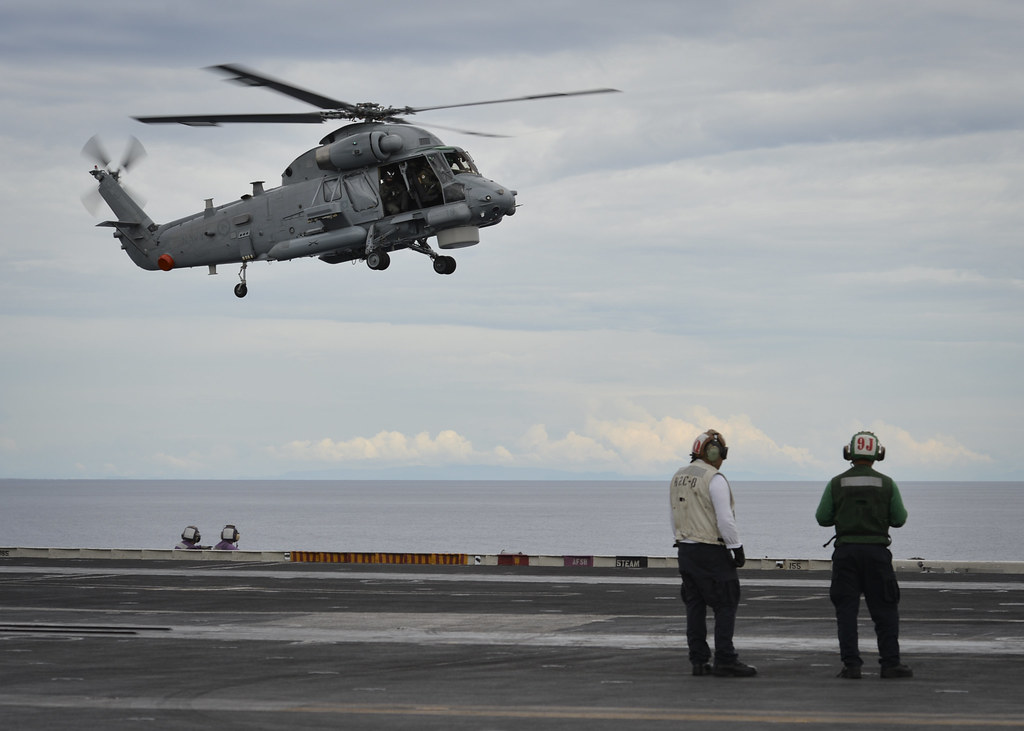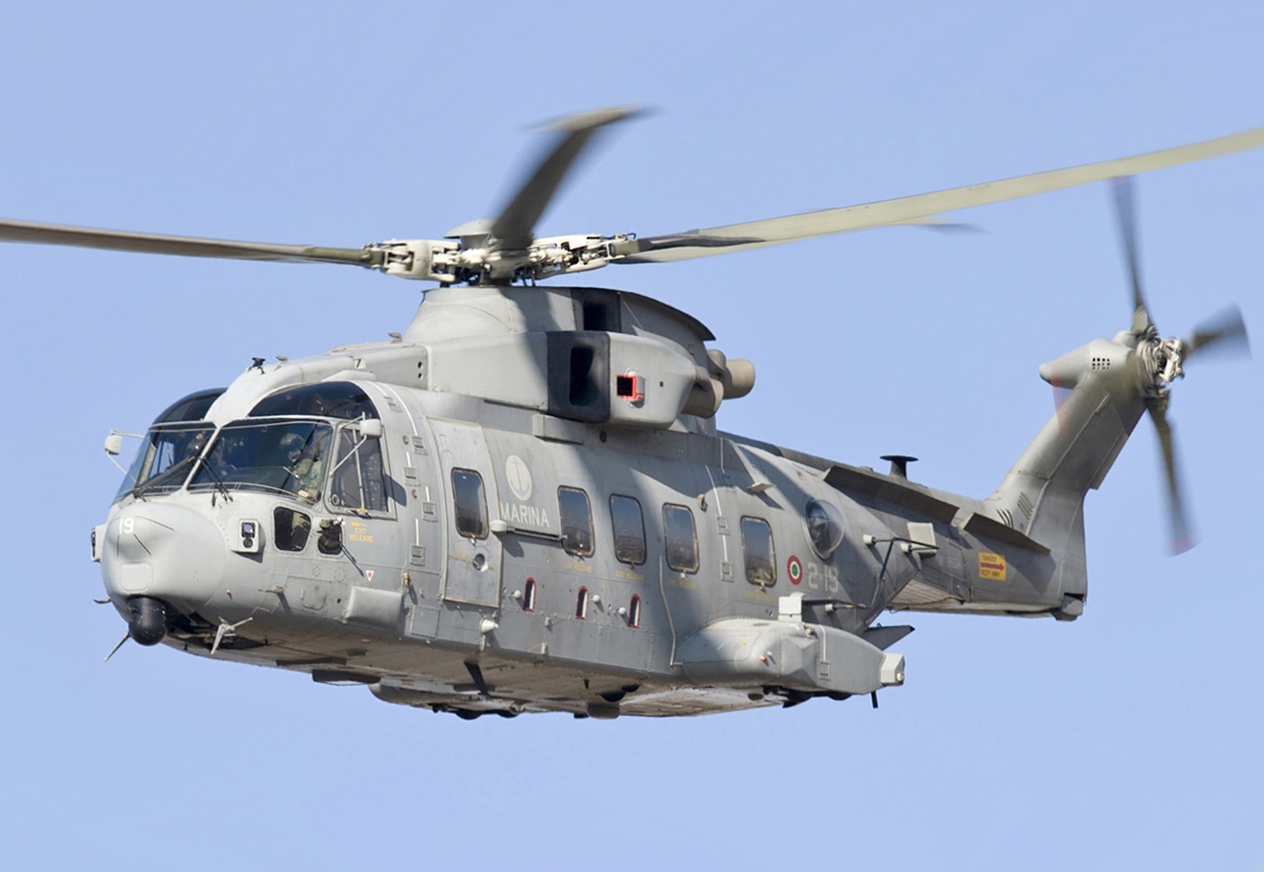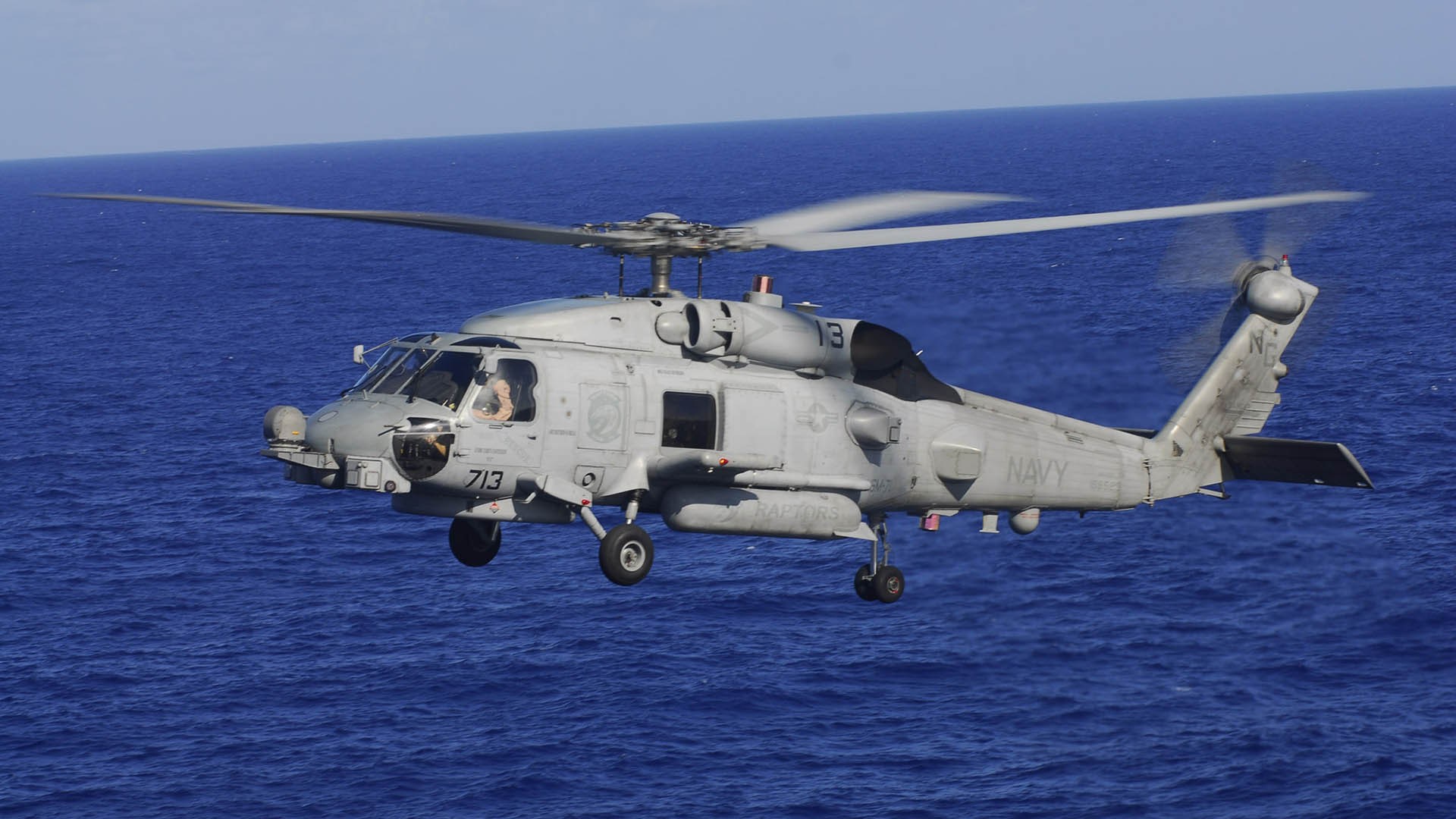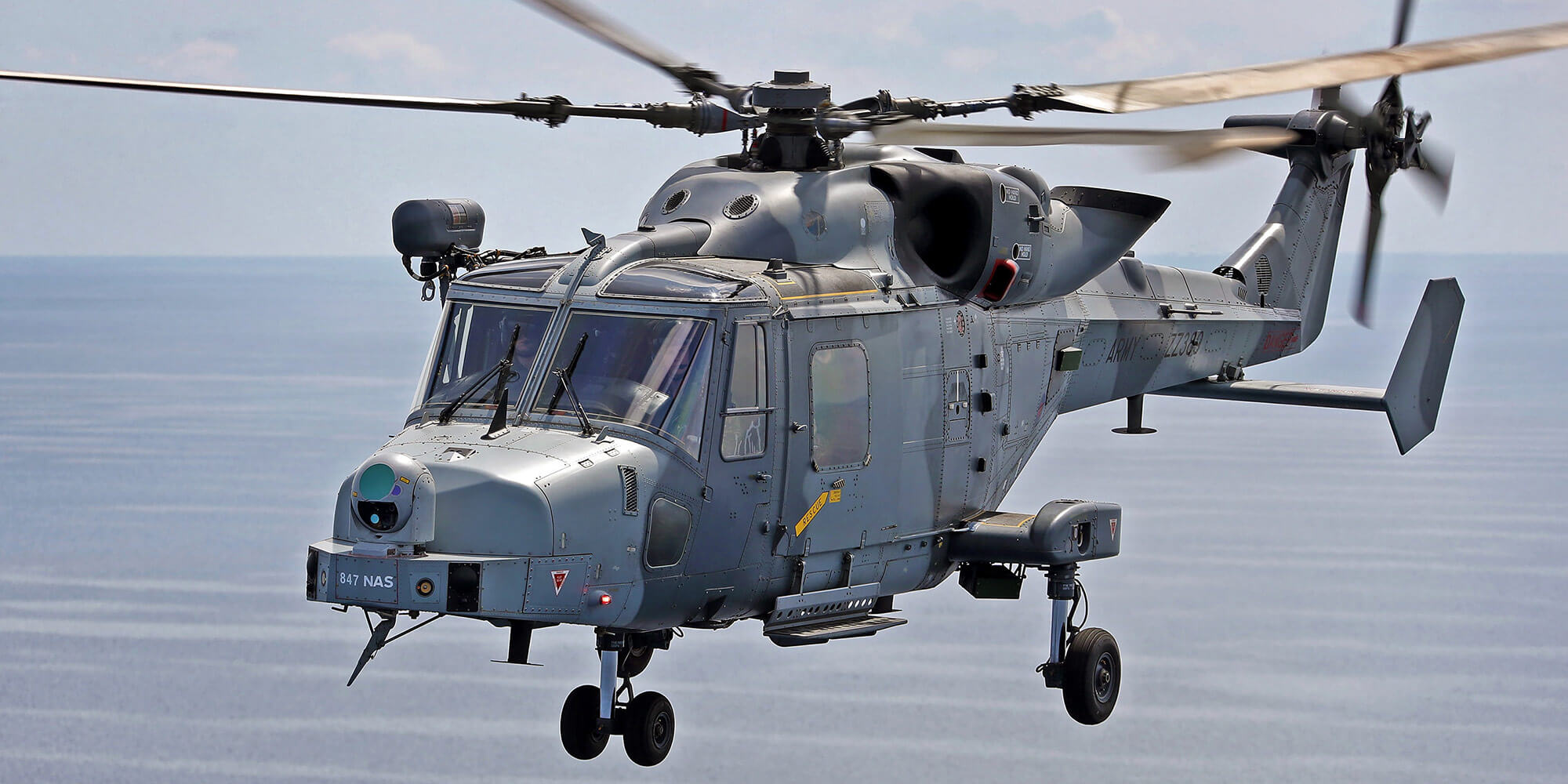With its Seasprites due for replacement in 2027, the Defence shopping list includes nine maritime helicopters. Editor-at-large Peter Greener surveys the market and considers the main contenders.
In the interview with the Secretary of Defence in the Autumn issue of Line of Defence Magazine, it was noted that in the Defence Capability Plan 2019 (DCP 2019) the replacement of the maritime helicopters had been brought forward, and the current eight Kaman SH-2G(I) Seasprites were to be replaced by nine new aircraft in 2027.
In discussing this future capability, the Secretary observed that, “Ultimately it boils down to what the Government requires. Undoubtedly the specification will require a range of capabilities in the new maritime helicopters; a combination of sealift, patrol and combat capabilities.” Whilst a Request for Tender is envisaged in 2024, industry engagement and planning will need to progress significantly during the tenure of the next government. This next government will therefore need to signal what is required.
This article discusses this crucial complementary capability for the Royal New Zealand Navy (RNZN), exploring a range of aircraft with a wide range of capabilities.
The DCP 2019 indicates that there will ultimately be nine RNZN ships capable of embarking helicopters. With the purpose and therefore the requirements of each class of ships varying significantly, the replacement maritime helicopter needs to be versatile and affordable. What all RNZN ships have in common is that they operate at times in some of the most hostile sea-states on the planet, a further challenge for maritime helicopter operations.

In reviewing the international aviation press it becomes readily apparent that the number of capable, available, contemporary maritime helicopters are few.
Whilst there are other maritime helicopters available, a number of commentators agree upon eight of the top performing helicopters globally, based on equipment, range and endurance.
These eight include the SH-2G Super Seasprite, the predecessor to the SH-2G(I) Seasprite. Also included are three machines manufactured in Russia or China; the Chinese Z-18F, an anti-submarine helicopter that can be deployed on smaller surface combatants of the People’s Liberation Army Navy; the Russian Ka-27 helicopter used by the naval forces of Russia, Ukraine, Vietnam, China, and India; and the Chinese manufactured Z-9EC, an Anti-Submarine Warfare (ASW) helicopter operated by Pakistan.
Excluding all four of these aircraft, this then leaves the Leonardo AW101(Military), the NH Industries NH90 NFH (Naval Frigate Helicopter), the Lockheed Martin Sikorsky MH-60R Romeo, and the Leonardo AW159 Wildcat.
In assessing these four remaining aircraft, whilst acknowledging that the new government will need to confirm what is required, it is perhaps helpful to review the specifications required at the time of the SH-2G(I) Seasprite purchase. In the Major Projects Report 2015, the Ministry of Defence noted six requirements:
- Conduct military and civil surveillance;
- Embark and operate from all RNZN aviation-capable units;
- Detect threats in a hostile environment;
- Conduct maritime search and rescue;
- Prosecute surface and sub-surface targets;
- Utility lift.
How well might the four remaining aircraft meet these requirements?
Leonardo AW101 (Military)
The Leonardo AW101 multi-role helicopter is capable of performing a wide range of missions in maritime and littoral environments. It has been widely used in a number of European navies and air forces, along with the Royal Canadian Air Force and the Japanese Maritime Self-Defense Force.
In Royal Navy service there are two variants, a dedicated anti-submarine warfare aircraft, the Merlin Mk.2 and a Commando battlefield helicopter, the Merlin Mk.3. In addition to its ASW capability the helicopter can also be armed with anti-ship missiles, air-to air missiles, air-to-surface missiles, rockets and gun systems.

Whilst a very capable helicopter, it is rather more than is needed; it is also very large at 22.83 metres long. As such it would not meet requirement (b) – embark and operate from all RNZN aviation-capable units.
NH90 NFH (Naval Frigate Helicopter) The NH90 is a twin-engine, medium size helicopter programme managed by the joint venture NHIndustries. The NH90 NFH is an advanced ASW helicopter and is operated by, amongst others, the Italian, French, Netherlands, Norwegian, Swedish, German, Qatari and Belgian navies (the Royal Australian Navy operates the MRH90, the troop transport (TTH) variant of this aircraft, at sea).
For the NFH role the NH-90 can be configured with a variety of sensors for Anti-Surface Warfare (ASuW) and ASW including dipping sonar in the cabin. Similarly, a range of external weapons can be carried including two torpedoes, whilst the Italian NH90 NFH are equipped with Marte MK-2/S anti-ship missiles, and the Qatari aircraft have Marte ER antiship missiles fitted. The helicopter is installed with dipping sonar/sonics systems to detect quiet submarines operating in the open ocean and in littoral waters.
In the Ministry of Defence (MOD) Major Projects Report 2015, the NH90 NFH was evaluated alongside the SH-2G(I) and the following observations were made: the capital cost was not well known but based on the NH90 they would be expensive compared to other options; the operating costs were not well known but would be higher than the Seasprite; and, again of some importance, they would be unable to operate from the OPVs.
Whilst it was noted that there would be high commonality with the NH90 in training and maintenance, it has since become clear that in service the aircraft has not been without its problems.
The Royal New Zealand Air Force (RNZAF) received the first two of its eight NH90 TTH helicopters on 6 December 2012 and since then has built up considerable operating experience with the aircraft. In an interview with Flight Global in June of this year, Chief of Air Force Air Vice Marshal Andrew Clark noted that, “I think, like a number of NH90 customers, that we would prefer to have a higher availability rate out of them”.
Remaining Contenders
This then leaves two aircraft that have in recent years been competing with each other in the international market: the Sikorsky MH-60R and the Leonardo AW159 Wildcat.
The Royal Danish Navy was the second export customer for the MH60R, following the Royal Australian Navy. The Danish government considered both the MH-60R and the AW159, as did the Republic of Korea.
Unlike Denmark, South Korea announced its decision to proceed with the AW159. These aircraft were delivered in 2016 and were reported to cost significantly less than the MH60R. Another call for tenders went out in 2018 to supply the ROK navy with a further 12 helicopters and Lockheed Martin and Leonardo are competing once again, but no decision has been made as yet.
MH-60R Romeo
The MH-60R is a next-generation ASW and ASuW helicopter produced by Lockheed Martin. It is described as one of the most advanced naval helicopters available. The MH-60R was chosen by Australia to operate from the Anzac frigates and the new Air Warfare Destroyers.
The helicopters are equipped with a sonobuoy launcher, forward looking infrared radar (FLIR), multimode radar, dipping sonar, integrated self-defence suite and four weapon stations. The aircraft is equipped with combat systems designed to employ the Mark 54 anti-submarine torpedo and is undoubtedly a very capable ASW platform.

Fitted with Hellfire air-to-surface missiles, this is perhaps the major disadvantage in an ASuW role, as the Hellfire has a limited range of 8 km (the SH-2G(I) is fitted with the Penguin Mk2 Mod7 with a range of 34 kms). It could therefore meet the requirement stated in 2015 to (e) prosecute surface and sub-surface targets, but with limitations.
The other consideration from a navy fleet perspective is that at 19.76 metres long it is larger than an NH90 NFH and therefore unable to embark and operate from all RNZN aviation capable units.
AW159 Wildcat
The AW159 Wildcat is an advanced multi-role, maritime and utility aircraft produced by Leonardo Helicopters. Based on the Lynx family of helicopters, the AW159 replaced the Lynx fleet in the British Army and Royal Navy, entering service in 2015.
Designed from the outset as a maritime helicopter, the airframe design of the Wildcat is built to operate off the smallest frigates and offshore patrol vessels, including in heavy sea states.
The helicopter integrates AESA radar, active dipping sonar, an electrooptical device, ESM and a defence aids suite. Onboard sensors and mission systems enable the Wildcat to autonomously find and track surface and sub-surface targets.
Already capable of carrying a wide range of weapons, missiles, torpedoes, depth charges, rockets and guns, its newly designed weapon wing will be able to carry a maximum load of 20 Martlet Lightweight Multi-role Missiles (LMM) or four Sea Venom missiles, or a mixture of both. Whilst the LMM has a range of 8 km, the Sea Venom, jointly developed by France and the United Kingdom, has a range of 20 km, allowing the helicopter to remain beyond the reach of most modern air defence systems.
As a combat helicopter, its ISR and weapons capability over land as well as sea is notable. As a utility helicopter operating off the OPVs, the Wildcat can lift underslung loads up to one tonne.
In the MOD Major Projects Report 2015, the AW159 was also evaluated alongside the SH-2G(I). It was noted that the Wildcat met or exceeded all user and operational requirements, it benefitted from its fully integrated avionics system, and it was expected to be cheaper to maintain than the Seasprite.

Challenges for the future In considering options for the future maritime helicopter fleet, it is instructive to once again refer to the MOD Major Projects Report 2015 and the recommendations regarding the ultimate purchase of eight NH90 Medium Utility Helicopters (MUH).
Here seven options, 1- 5A, 5B and 5C, were considered to provide a mixed MUH and helicopter training capability. Option 5B was to purchase 9 medium utility aircraft and 8 training and light utility aircraft. Option 5C was to purchase 10 medium utility aircraft and 10 training and light utility aircraft.
In the assessment provided, whilst Option 5C was considered the optimum solution because it met all key operational requirements, Option 5B was considered an acceptable solution because it also met all the operational requirements, but it was noted that readiness could be compromised if concurrent tasks were required. In the event, only eight NH90 MUN helicopters were purchased.
In previously raising the issue of the total number of operational helicopters needed for nine ships with the Commander of Joint Forces in the Spring 2019 issue of Line of Defence Magazine, Rear Admiral Gilmour noted that, “As an operational commander I am aware that quantity can have a quality of its own - it is not ideal to have the latest highest tech that is not available due to the small numbers of them that can be afforded.”
Nine new maritime helicopters are envisioned and therefore the cost/ capability trade-off of purchasing any fewer than this must be carefully weighed.





